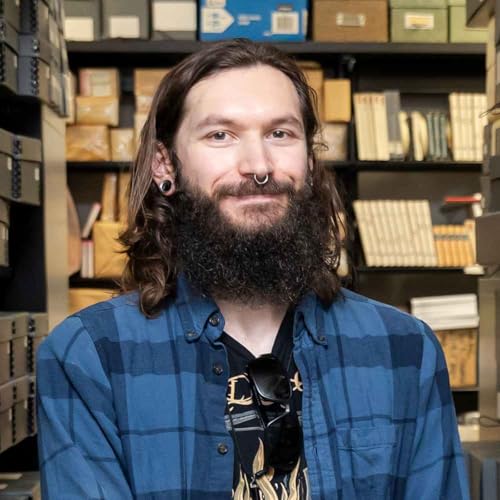Tyler Lee-Wynant grew up hearing stories about his great-great aunt, Edna Campbell Guerrero. Born in 1907 in Mendocino County, she was a native speaker of Northern Pomo, one of seven languages spoken by the Pomo people who are Indigenous to Northern California.
“She was a no-nonsense person,” says Lee-Wynant, a UC Berkeley Ph.D. student in linguistics. “She was an amazing individual. She cared so deeply about passing on what she knew.”
For more than 50 years, Guerrero worked with Berkeley linguists to document her language and culture. These recordings are part of the campus’s California Language Archive. In them, she tells stories, describes cultural practices, says vocabulary and conjugates verbs. Whenever Lee-Wynant hears his aunt’s voice, strong and determined, he knows it’s his responsibility to carry on her work.
As a graduate student researcher for the archive, Lee-Wynant is cataloging and analyzing a new collection that includes hours of recordings of his aunt, among other materials. “It's such a trove of information about ... my family's history,” he said. “I always get the chills whenever I listen to it because you never know what story is gonna come up.”
In this episode of Berkeley Voices, Lee-Wynant shares how his aunt's recordings have opened a portal to his family’s history and led him to teach their language to new generations.
And in this UC Berkeley News companion piece, learn more about the linguist who created the archive's newly acquired collection, her lifetime of research with Indigenous communities and how her collection of tapes and notebooks found their way to the archive.
This is the first episode of a new Berkeley Voices season, featuring UC Berkeley scholars working on life-changing research and the people whose lives are changed by it. New episodes come out on the first Thursday of every month, from November through April.
Listen to the episode and read the transcript on UC Berkeley News (news.berkeley.edu/podcasts/berkeley-talks).
Music by Blue Dot Sessions.
UC Berkeley photo by Brittany Hosea-Small.
Hosted on Acast. See acast.com/privacy for more information.
 23 mins
23 mins Nov 4 20252 mins
Nov 4 20252 mins 19 mins
19 mins 17 mins
17 mins 24 mins
24 mins Feb 24 202515 mins
Feb 24 202515 mins 23 mins
23 mins 18 mins
18 mins

